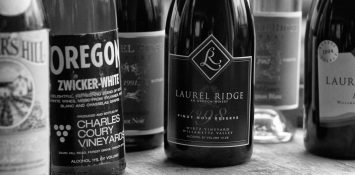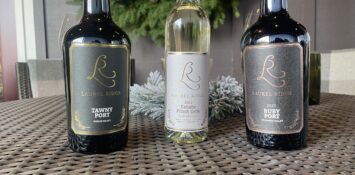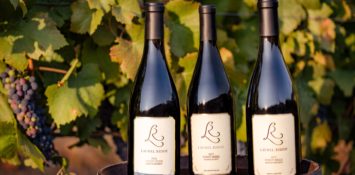Laurel Ridge Estate History: Part One
The history of the Oregon Wine Industry can be likened to that of the Oregon Trail- paralleled story lines of excitement, fervor, pilgrimage, disease, destruction, and rebirth are dominant themes in both. But unlike the Oregon Trail, the tale of the modern Oregon Wine Industry is accompanied by the captivating views of the Willamette Valley and the joy that is enjoying a glass of Oregon Pinot Noir with loved ones while taking these views in.

After prohibition ended in the early 20th century, fruit wines dominated the scene until winemakers from California began exploring Oregon in the late 1960s. Many believed that Oregon’s Willamette Valley would make a fantastic place to grow grapes, notably Pinot Noir, as the climate was so similar to other winemaking regions in France and Germany. They weren’t wrong. The first vineyards in Oregon were planted in the very late 1960s and early 1970s, putting Oregon on the map as a potential American Viticultural Area.

Around the same time that the first Oregon vineyards and wineries were being established, our founder David Teppola was preparing to pursue his lifelong dream of living on a farm and running his own vineyard. A dream over 15 years in the making since he had studied abroad in France and first fell in love with what he called the “Wine of Kings”, Pinot Noir. Having spent his formative years in Portland and graduating with a degree in Philosophy from Lewis and Clark College, it was only fitting that his true passion in life was wine, right?

Between 1971-1974, David explored land for sale across Willamette Valley. He tirelessly sought the perfect combination of land size, slope, location, sun exposure, and soil type. He would settle for nothing but the perfect vineyard site. He finally found a potential vineyard site rich in Willakenzie Loam soil. At the time, the coveted soil type for Oregon Winemakers was Jory soil, which was known to be nutrient rich and excellent for growing grapes. Willakenzie Loam soil, on the other hand, was generally believed to be nutrient-poor and wholly undesirable for grapes.

David believed differently, though. It was his conviction that the nutrient profile of Willakenzie Loam soil would actually produce more complex, nuanced, and subtly distinct grapes, not only perfect for producing Pinot Noir, but award winning Pinot Noir at that.

Against the better advice of his colleagues, David purchased the farm, then planted with Bartlett Pears and Italian Plums, in 1974. He renamed the estate Finn Hill Vineyard, a nod to his Finnish roots, and began clearing land for his Pinot Noir vineyard almost immediately. Only time would tell if his conjecture about Willakenzie Loam soil being suitable for growing Pinot Noir in Oregon would be a success or a catastrophe.
Read more about our story here- Laurel Ridge History: Part Two


